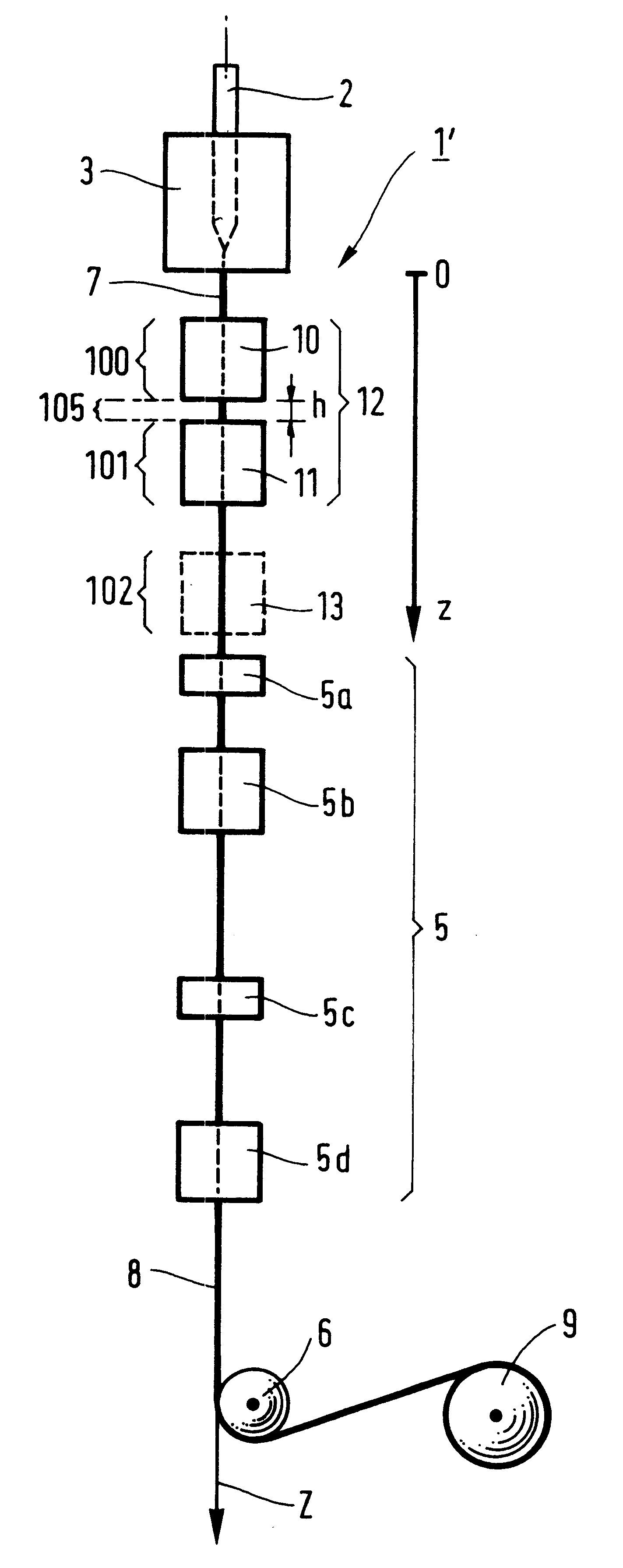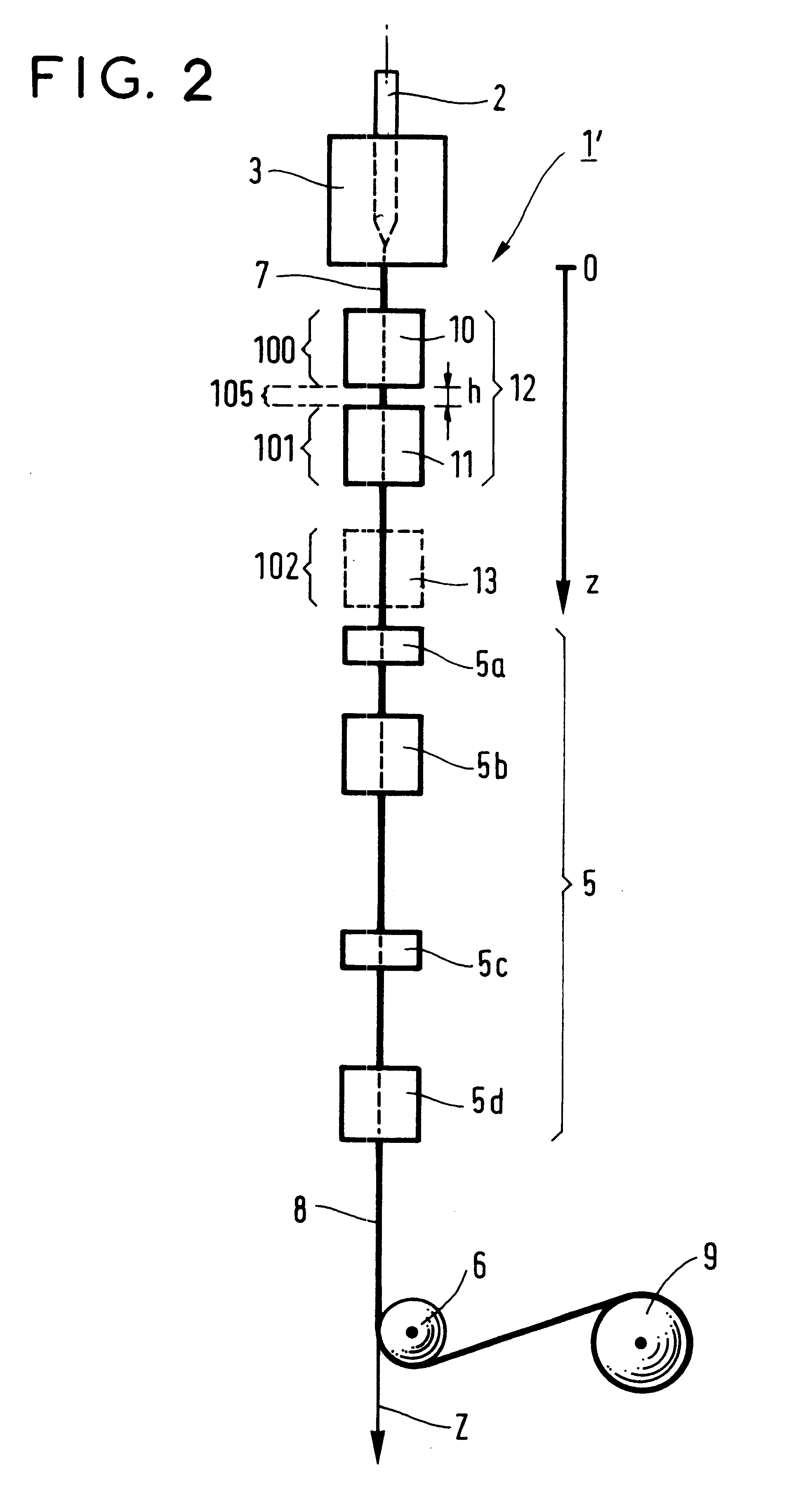Method of cooling an optical fiber while it is being drawn
a cooling method and optical fiber technology, applied in the field of cooling an optical fiber while it, can solve the problems of eccentricity of the fiber in the coating and with the quality of the coating, and technical problems can arise, so as to reduce the attenuation of the fiber, improve the cooling effect of the optical fiber, and reduce the scattering of rayleigh back
- Summary
- Abstract
- Description
- Claims
- Application Information
AI Technical Summary
Benefits of technology
Problems solved by technology
Method used
Image
Examples
example
FIG. 3 shows a few cooling curves for the optical fiber in a prior art drawing device which, compared to the device shown in FIG. 2, does not include the devices 10 and 13. The temperature at the outlet from the drawing furnace 3 is 1800.degree. C., the total height between the drawing furnace 3 and the coating device 5 is 9 meters (m), and the drawing speed is 900 m / min. In the prior art arrangement shown there is only one slow cooling device 11 at the outlet from the drawing furnace 3. A heating device 11 which is 5 m long and has a given efficiency is provided. The distance z in meters from the bottom of the drawing furnace 3 (see FIG. 2) is plotted on the abscissa axis and the temperature T of the fiber in .degree. C. is plotted on the ordinate axis. The equation for the continuous parts of the cooling curves is of the following type:
T(.degree. C.)-T.sub.0 =(T.sub.e -T.sub.0).exp(-.alpha.*z),
where z is the distance in meters and .alpha., T.sub.e and T.sub.0 are glass relaxation ...
PUM
| Property | Measurement | Unit |
|---|---|---|
| temperature | aaaaa | aaaaa |
| temperature | aaaaa | aaaaa |
| temperature | aaaaa | aaaaa |
Abstract
Description
Claims
Application Information
 Login to View More
Login to View More - R&D
- Intellectual Property
- Life Sciences
- Materials
- Tech Scout
- Unparalleled Data Quality
- Higher Quality Content
- 60% Fewer Hallucinations
Browse by: Latest US Patents, China's latest patents, Technical Efficacy Thesaurus, Application Domain, Technology Topic, Popular Technical Reports.
© 2025 PatSnap. All rights reserved.Legal|Privacy policy|Modern Slavery Act Transparency Statement|Sitemap|About US| Contact US: help@patsnap.com



